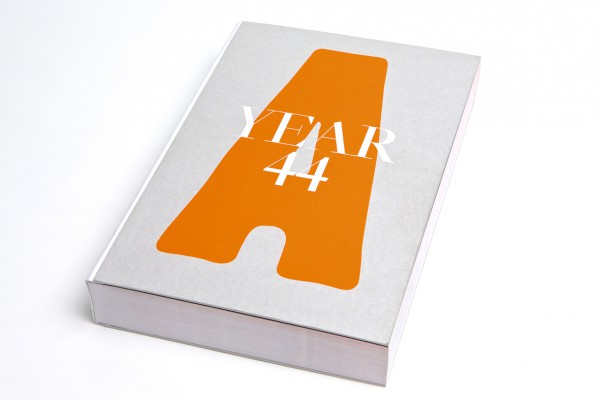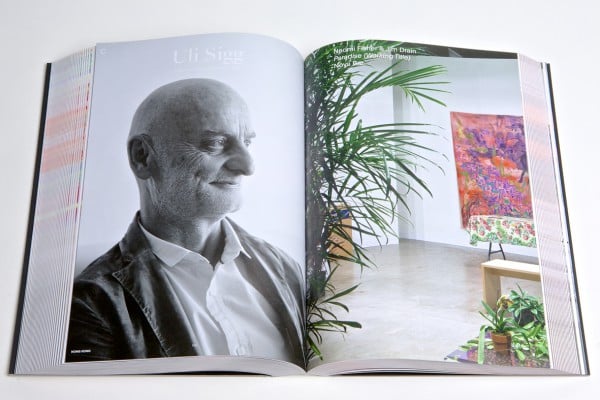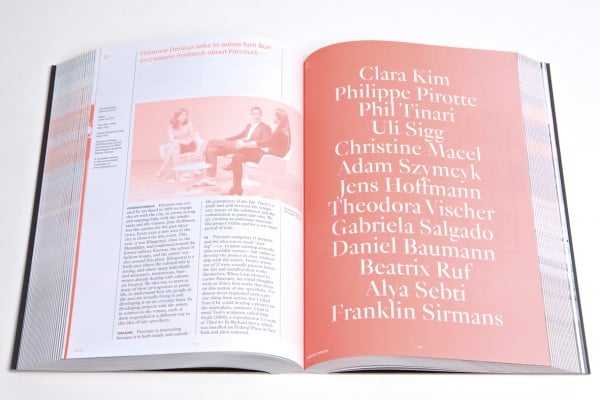Art Fairs
5 Entertaining Factoids from Art Basel’s, Well, Silly Art-Fair Yearbook
Uninspired, even goofy at times, the new yearbook has a few bright moments.

Uninspired, even goofy at times, the new yearbook has a few bright moments.


Art Basel | Year 44,MCH Messe Schweiz (Basel) AG / Courtesy Art Basel
On the eve of the 45th edition of Art Basel, fair organizers have published a massive, nearly 800-page brick of a book titled Year 44 that purportedly departs from past Basel catalogs in that it “embodies a year in the art world as seen through our lens,” writes Marc Spiegler, a fair director, in the introduction.
Here at artnet News we were excited to learn that an art fair was interested in more ambitious publishing a book (yes, something people might read) and enthusiastically wanted to check it out. But to be honest, it’s a pretty weird publication. With so many dealers, artists, and events to discuss, mention and remember, its pages are as busy and confusing as art fairs themselves, while the bewildering table of contents made us all keep asking “What, exactly, is this?”
There are some uninspired picks for the year ahead from power-players like Maria Baibakova and Philippe Vergne, some photo-only “Top 10″s from the various fairs from other VIPs, and an alphabetical listing of every dealer from any Art Basel event (there is a color coded key to tell you which of the three fairs they were at) with some exceptionally uninspiring content. Sample book question, to Andrew Kreps: “What first compelled you to open a gallery?” Answer: “I wanted to work with artists.” This is pretty much the tone of the book. All of it feels pretty half-baked, somewhere between the usual, traditional fair catalog and a yearbook. Basically the whole approach feels like a very strained attempt to make something coherent out of the carousel of the three mega-fairs, even trying to drum up a nostalgia really no one feels.

Art Basel | Year 44,MCH Messe Schweiz (Basel) AG / Courtesy Art Basel
And seriously, with the packed and seemingly ever-growing roster of contemporary fairs each year—one recent count had contemporary fairs alone at 220—who has time for this monster of an art tome? It’s also $80, FYI, or free with your VIP card– of course.
But don’t worry, artnet News has read through this crap so you don’t have to. And as an art world public service, we have digested five of the most memorable moments, stretching the definition of “memorable” just a bit:
1. David Juda waxes nostalgic about the fair’s wild, dog-pee covered early days
Perhaps the most substantial of the book’s interminable Q&A’s with dealers, David Juda of London’s Annely Juda gallery has some entertaining reflections on four decades at Basel, including the early days with his late mother Annely:
“For the first ten, 15 years, we would bring our own carpets and lights. My mother unpacked the pictures, and I would bring carpet squares and install the lights that we brought directly from London…Once a visitor came in with a dog who peed on one of our paintings lying on the floor, and was upset that I took the dog away…If the hanging was not that aesthetic, there was probably better art, just badly hung—whereas now there is a lot of bad art very well hung…”
2. Takashi Murakami (of all artists!) lamenting the state of the contemporary art market in Japan
“I began my career at the very moment that this crazed bubble economy crashed, and as the euphoria began to fade, the whole of Japanese society was overcome with the feeling that art was nothing but a con game. Since that moment, until now, the Japanese art scene has not seen any improvements, becoming lost in a negative spiral of reduced reproduction. Art exhibits and performances now exist mainly to fill the yearly program requirements of the many museum built around the country during the bubble economy.”
3. A look back at last year’s “The Place of Mid-Level Galleries in the Age of the Mega-Gallery”
Not a bad idea to highlight the best of the always-interesting, easily missed programming from the fairs VIP lounges, this one between Elizabeth Dee, Ed Winkleman, and Josh Baer at Art Basel 2013 (though you could also just watch this one online):
Winkleman: “I think whether you become a top tier gallery or a mega-gallery is your own choice. You can exist as a top-tier gallery without necessarily having to open five or six spaces.”
Baer: “A mega-gallery would be a gallery that has either so many spaces or so many artists or so many directors that you can’t really identify it as a mom-and-pop shop.”
Dee: “How do you manage a gallery into a global system as a company of four, doing six fairs around the world? I think those dilemmas happen earlier now than they used to. And then there’s another level where you actually become fiscally successful with a group of artists and then you have to ask yourself ‘Do I leverage this to the next gallery chapter?’ and ‘What does that gallery chapter look like?
4. Jay Jopling’s still not sure if his Brazil galley was a good idea
In “Three Questions for Jay Jopling,” we find this ambivalent take on the future of the Brazilian art market, from the first big dealer to open an outpost there:
Q: “Why did you choose to open a branch in Sao Paulo?”
A: “Brazil is a difficult place to do business but a great place to show artists…You could say it’s a pioneering venture and a calculated risk, but our lease is for three years and we can reassess the situation at the end of this time.”
5. Harald Falckenberg denounces the whole thing

Harald Falckenberg. “This can be understood as a step back toward the re-feudalization of art.”
Photo: via Wikipedia.
Finally, in an actual essay for the catalogue, the famed collector traces the history of the art market in recent decades in an attempt to explain where we are today and why. Basically he seems to imply that the “spectacle” of Art Basel itself is taking us all back in time (and not in a funky retro way either):
“Ours is now a society of the spectacle with sponsored happenings and large scale events that degrade art as a means of feeding the culture industry, and an art market with top prices for important works that only a few wealthy people and exquisite art institutions can afford. This can be understood as a step back toward the re-feudalization of art.”